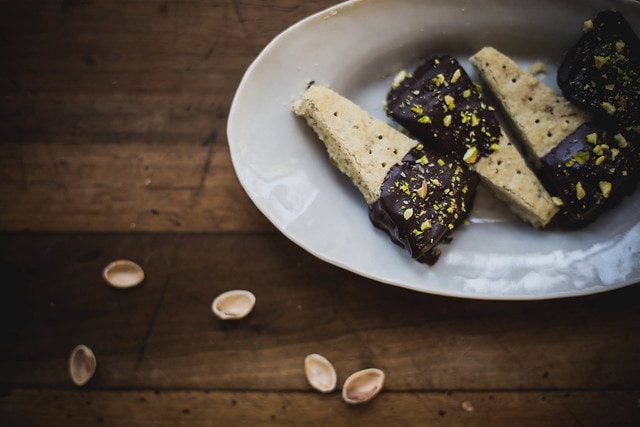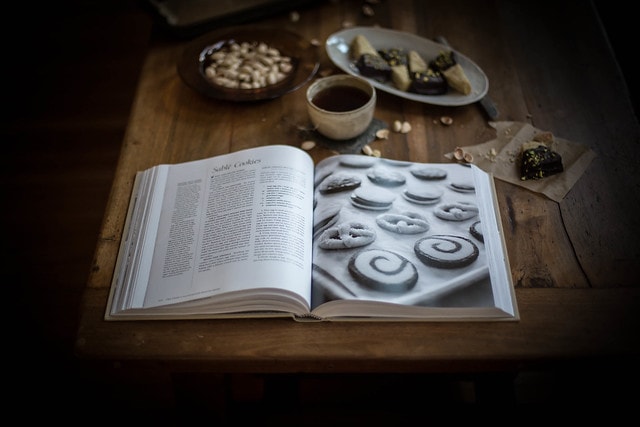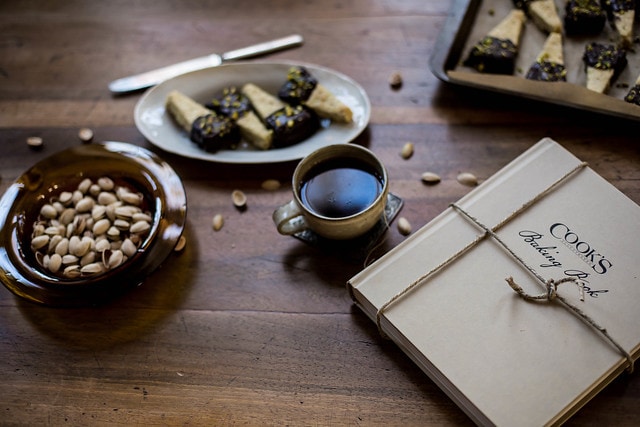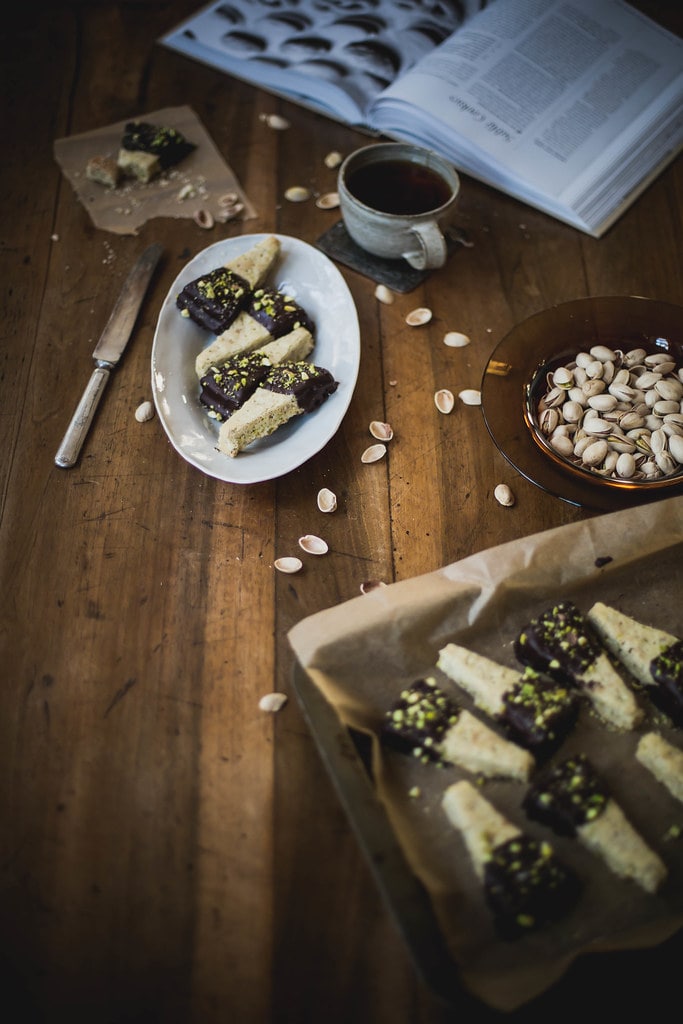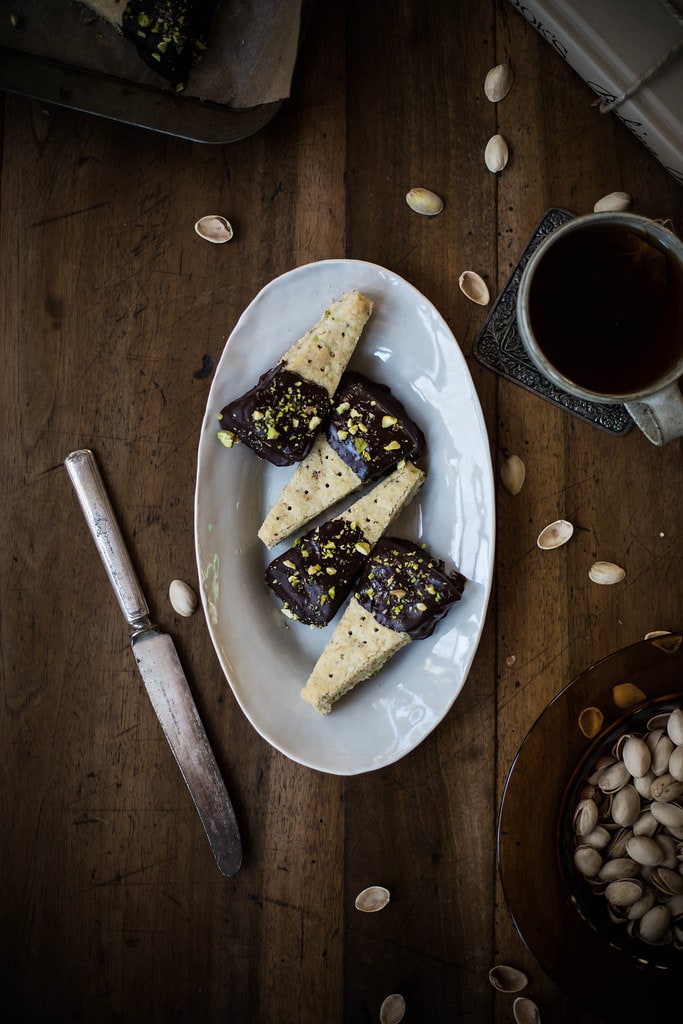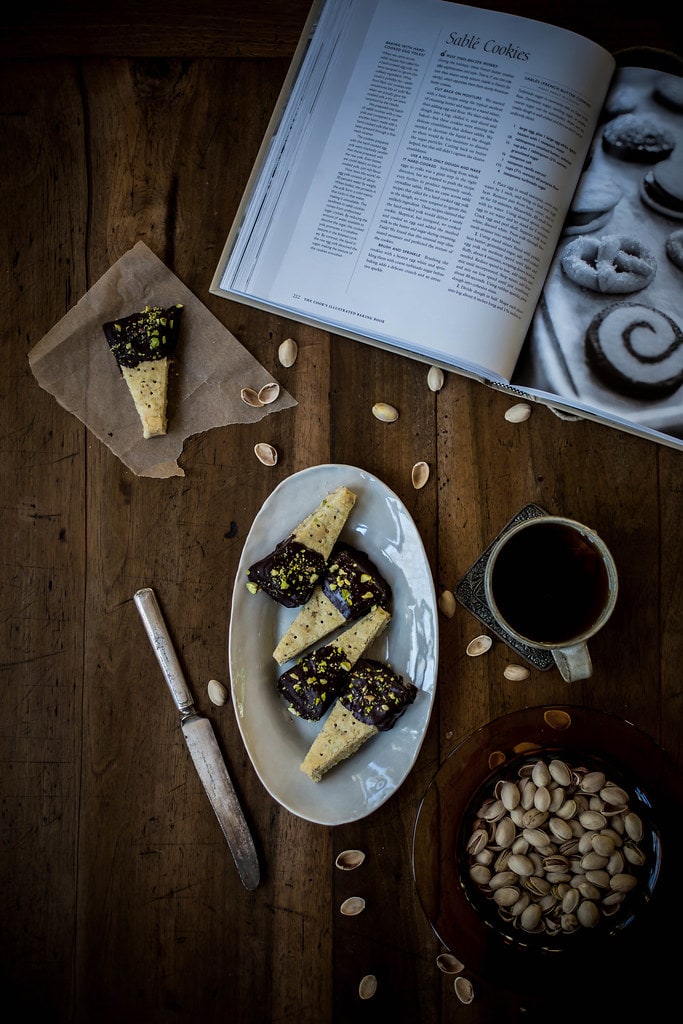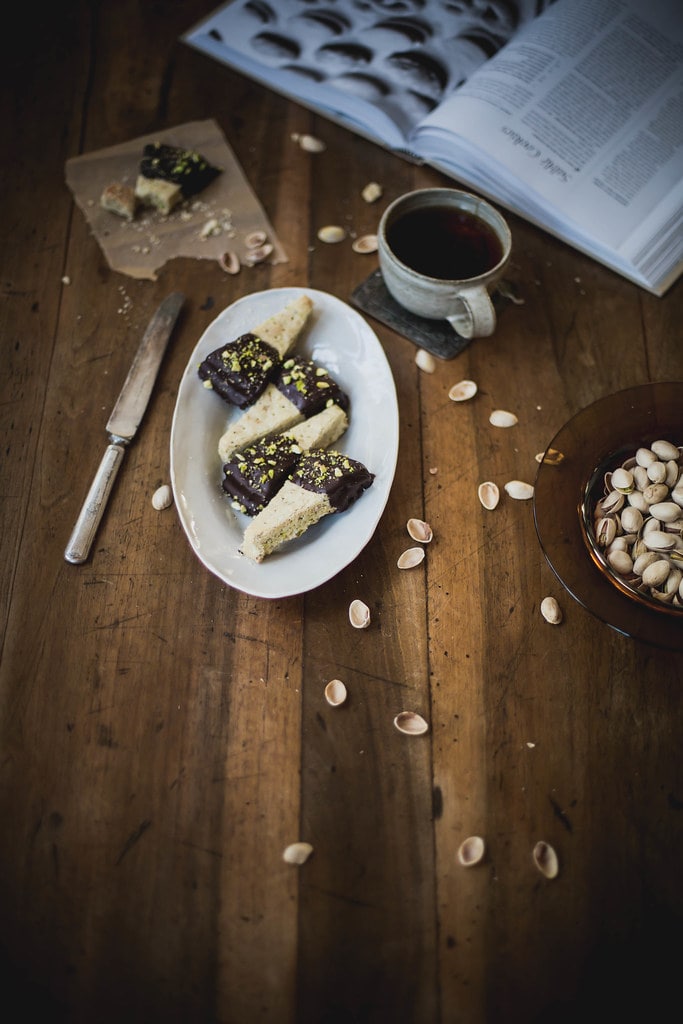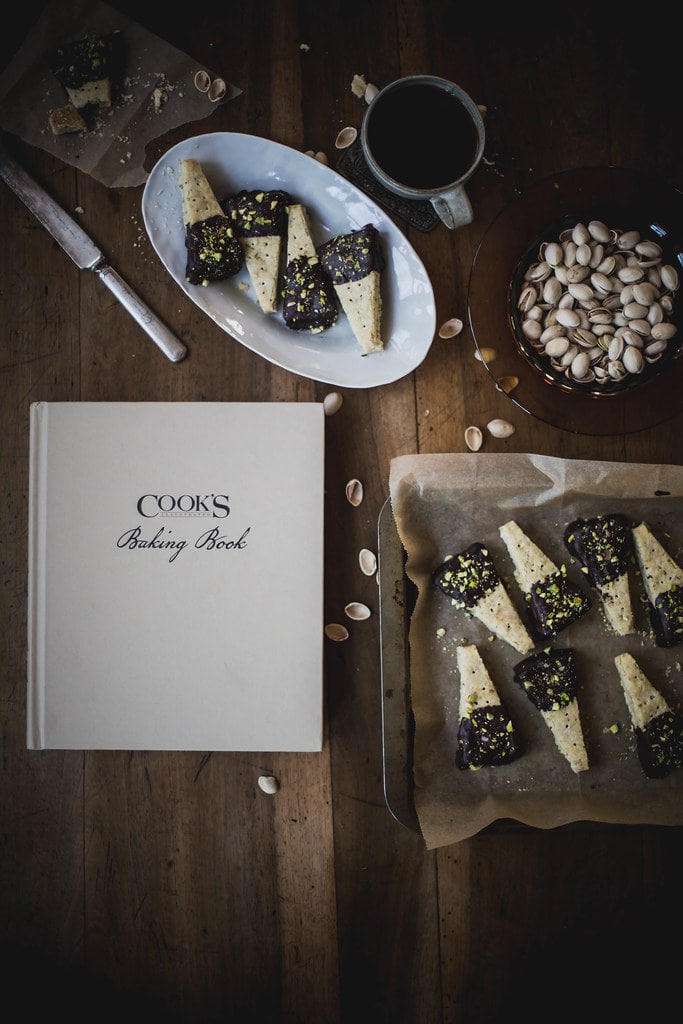I have two things for you today: perfectly buttery pistachio shortbread dipped in dark chocolate from The Cook’s Illustrated Baking Book right in time for holiday cookie season, and I’m very pleased to also be giving a copy away to one of you! Here’s the thing: I write recipes, it’s true. But I’m not for recipes, really. What I’m for is a place where traditional & creative flavor pairings meet technique and ratios. I’m for guides, for text books meant to empower. I’m for everyone having the freedom to play in the kitchen and to use what’s at hand, and this book provides what Cook’s Illustrated always has: technique. Hardcore, no messing around technique.
Fact: If I’m going to approach something I haven’t baked before or I’m looking for a better way to do something, I go see if America’s Test Kitchen has a recipe for it. It’s from them that I learned to freeze and grate my butter for scones, and I just learned that by replacing part of the wheat flour in short bread with oat flour and cornstarch you end up with a far more tender product due to the fact that the small amount of water in butter activates the gluten in the flour. This can make your shortbread tough. Boo hiss. That’s where they come in and sweep me off my feet with sexy quotes like “Oats contain very few of the proteins necessary for gluten development, plus they have a nice flavor”. Fanning myself. All you need to do is talk about protein content as regards the texture of baked goods to get me all flushed. Not. joking.
I’m a food nerd, and these are the things I want out of a cookbook. I want to know that we use confectioner’s sugar in this recipe because there isn’t enough liquid for granulated sugar to fully dissolve, and I want someone who has put in enough time testing a recipe to figure out the beautiful choreography that is this shortbread: bake high, bake low, then turn your oven off & prop it open with a wooden spoon—one inch—to let the shortbread “dry”. Yes! Awesome! If I’m going to actually use a cookbook as oppose to glean inspiration from it (a fine use for a cookbook as well, truly!) then I want it to be able to teach me something I didn’t already know or couldn’t have/wouldn’t have figured out. That method falls squarely into that category. And this is why I love this book. It’s simple, no nonsense baking and once you master their techniques and see how they implement variations, you can strike off into your own unknown waters. As for me? I’ll probably be doing a rose thyme shortbread next. Because I’m into that whole herbaceous floral thing. Faery food, you know.
To enter to win a copy of The Cook’s Illustrated Baking Book all you have to do is leave a comment below. Giveaway now closed… Congrats to Andrea! A winner will be chosen by random at the end of the week! Good luck because this book is the kind of beauty that’s meant to take lots of sticky fingered abuse in the kitchen; it isn’t just a pretty tome for the shelf or coffee table. It’s a tool.
(I wasn’t paid to write this, and all opinions above are totally my own. As if I’d do this any other way! They did give me a copy of the book. Suh-weet!)
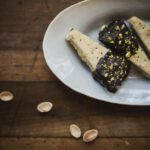
Ingredients
- 1/2 cup 1 1/2 ounces old-fashioned rolled oats
- 1/2 cup finely chopped toasted piachios
- 1 1/2 cups 7/12 ounces all-purpose flour
- 1/4 cup cornstarch
- 2/3 cup 2 2/3 ounces confectioner’s sugar
- 1/2 teaspoon salt
- 14 tablespoons unsalted butter chilled and cut into 1/8-inch-thick slices
- 10 ounces finely chopped bittersweet chocolate divided
Instructions
- Adjust oven rack to middle position and heat oven to 450 degrees. Pulse oats in a spice grinder or blender until reduced to a fine powder, about 10 pulses (you should have 1/4 to 1/3 cup oat flour). Using stand mixer fitted with paddle, mix oat flour, all-purpose flour, pistachios, cornstarch, sugar, and salt on low speed until combined, about 5 seconds. Add butter to dry ingredients and continue to mix until dough just forms and pulls away from sides of bowl, 5-10 minutes.
- Place upside-down (grooved edge should be at top) collar of a 9- or 91/2-inch springform pan on parchment paper-lined baking sheet (do not use springform pan bottom). Press dough into collar in even 1/2-inch-thick layer, smoothing top of dough with back of spoon. Place 2-inch biscuit cutter in center of dough and cut out center. Place extracted round alongside springform collar on baking sheet and replace cutter in center of dough. Open springform collar, but leave it in place.
- Bake shortbread for 5 minutes, then reduce oven temperature to 250 degrees. Continue to bake until edges turn pale golden, 10 to 15 minutes longer. Remove baking sheet from oven; turn oven off. Remove springform pan collar; use chef’s knife to score surface of shortbread into 16 even wedges, cutting halfway through shortbread. Using wooden skewer, poke about 10 holes in each wedge. Return shortbread to oven and prop door open with handle of wooden spoon, leaving 1-inch gap at top. Allow shortbread to dry in turned off oven until pale golden in center (shortbread should be firm but giving to touch), about 1 hour.
- Transfer sheet to wire rack; let shortbread cool to room temperature. Cut shortbread at scored marks to separate.
- Melt 8 ounces finely chopped bittersweet chocolate in microwave at 50 percent power for 2 minutes. Stir chocolate and continue heating until melted, stirring once every additional minute. Stir in additional 2 ounces finely chopped bittersweet chocolate until smooth. Carefully dip base of each wedge in chocolate, allowing chocolate to come halfway up cookie. Scrape off excess with your finger and place on parchment paper-lined rimmed baking sheet. Refrigerate until chocolate sets, about 15 minutes.
Notes
My name is Beth, Elizabeth Evelyn to be exact. A native Tennessean, I was born in the South.
I am the author behind Local Milk Blog.

